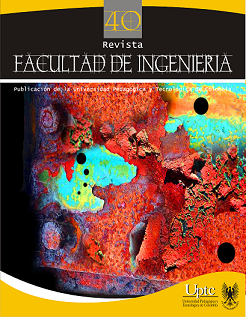Development of a PID Controller by Tuning Fuzzy Applied to a Rotational System (Inverted Pendulum)

Abstract
The inverted pendulum system has arised a great interest in the control and academia areas, this system modeling presents many difficulties associated with the control problems in the real world. This paper presents a different way to develop a control strategy for the system in question, based on the design and implementation of the rotational pendulum system, then employing the same modeling strategies by using the system identification methods, based on the artificial intelligence neural networks (N-FIR), to finally taking the tuning fuzzy control step, for the different physical conditions caused on the pendulum (change in length and/or mass), which are validated, with good results on the real system developed.Keywords
artificial intelligence, inverted pendulum, intelligent control, system identification, Fuzzy tuning
References
- R. M. Brisilla, V. Sankaranarayanan “Nonlinear control of mobile inverted pendulum”. Robotics and Autonomous Systems, Vol. 70, pp. 145-155, August 2015.
- F. Dai, X. Gao, S. Jiang, W. Guo, “A twowheeled inverted pendulum robot with friction compensation”, Mechatronics, Available online 4 July 2015.
- M. Olivares, P. Albertos, “Linear control of the flywheel inverted pendulum”, ISA Transactions, Vol. 53, pp. 1396-1403, 2014.
- Z. Sun, N. Wang, Y. Bi, “Type-1/type-2 fuzzy logic systems optimization with RNA genetic algorithm for double inverted pendulum”, Applied Mathematical Modelling, Vol. 39, pp. 70-85, January 2015.
- A. M. El-Nagar, M. El-Bardini, N. M. El-Rabaie, “Intelligent control for nonlinear inverted pendulum based on interval type-2 fuzzy PD controller”, Alexandria Engineering Journal, Vol. 53, pp. 23-32, 2014.
- O. Gualdrón, C. Peña, C. Maldonado, “Identificación automática de cilindros de almacenamiento de gas utilizando redes neuronales tipo hop field”, Revista Ingeniería de la Universidad Industrial de Santander, Vol. 11-1, pp. 101-109, 2012.
- A. Guerrero, O. Gualdrón, “Identificación de un modelo dinámico del generador de vapor de la caldera en la planta Termotasajero Colgener”, Revista Colombiana de Tecnologías de Avanzada, Vol. 21, pp. 52-59, 2013.
- M. Romero Ugalde, J.C Carmona, J. Reyes, V. Alvarado, J. Mantilla, “Computational cost improvement of neural network models in black box nonlinear system identification”, Neurocomputing, Vol. 166, pp. 96-108, 2015.
- E. Gómez, “Aplicación del modelo neurodifuso ANFIS vs. Redes Neuronales, al problema predictivo de caudales medios mensuales del río Bogotá en Villapinzón”, Revista Tecnura, Vol. 14, pp. 18-29, 2010.
- P. Szymczyk,“Z-transform artificial neural networks”, Neurocomputing, Vol. 168, pp. 1207-1210, 2015.
- J. S. Almeida, “Predictive non-linear modeling of complex data by artificial neural networks”, Current Opinion in Biotechnology, Vol. 13, pp. 72-76, February 2002.
- E. Caicedo, J.A. López, M.A. Muñoz, Control Inteligente. Editorial Universidad del Valle,2009.
- Z. Sun, R. Xing, C. Zhao, W. Huang, “Fuzzy auto-tuning PID control of multiple joint robot driven by ultrasonic motors”, Ultrasonics, Vol. 46, pp. 303-312, 2007.
- I. Anastasios, A. Dounis, P. Kofinas, G. Papadakis, C. Alafodimos, “A direct adaptive neural control for maximum power point tracking of photovoltaic system”, Solar Energy, Vol. 115, pp. 145-165, 2015.
- X. Ruan, M. Ding, D. Gong, J. Qiao, “Online adaptive control for inverted pendulum balancing based on feedback-error-learning”, Neurocomputing, Vol. 70, pp. 770-776, 2007.
Downloads
Download data is not yet available.